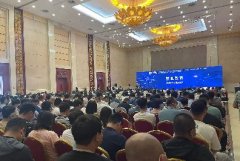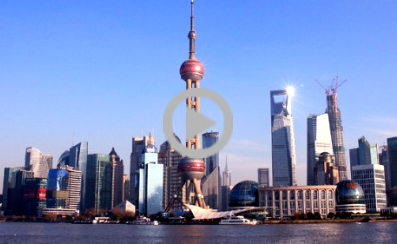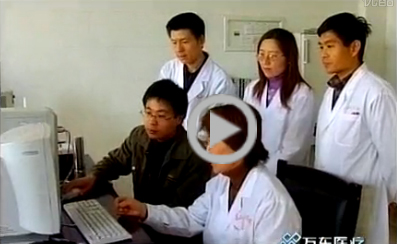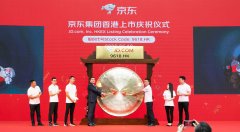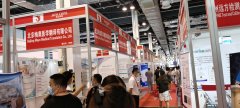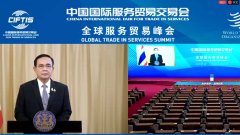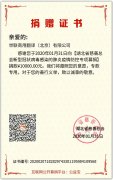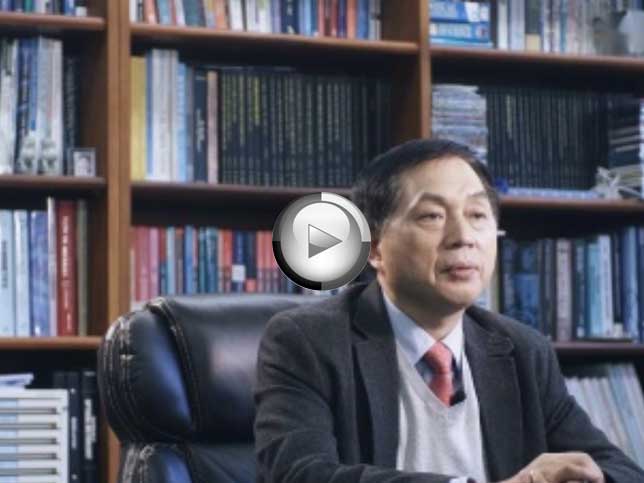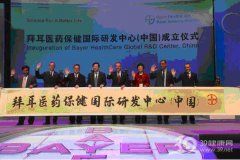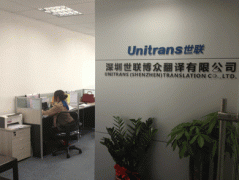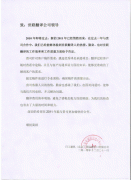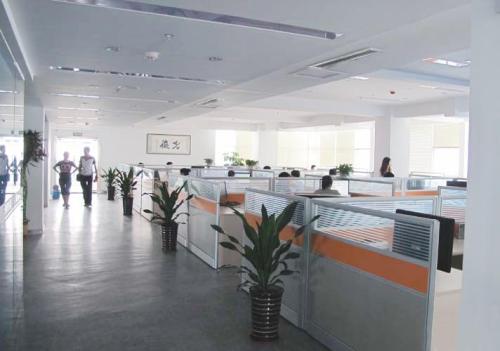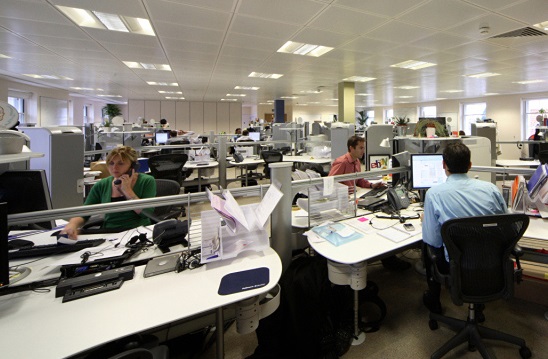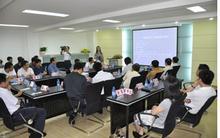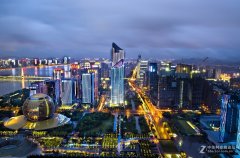上海翻译公司完成工程建筑类中英翻译
时间:2019-02-13 17:17 来源:未知 作者:dl 点击:次
上海翻译公司完成工程建筑类中英翻译

2.2 Design size, working system and product program
2.2.1 Factory design size
According to GSI entrustment, this project is designed on the basis of the production experience of similar refractory brick factories in China. Four sets of German brick machines have the output of 25t/h, annual finished refractory brick output of 12×104t and annual operation rate of 68.5%.
2.2.2 Working system 上海翻译公司
The workshop adopts continuous duty, i.e. three shifts a day and 8 hours a shift, with the operation rate of 68.5%, which is equivalent to the annual working days of 250 days of the host.
2.2.3 Product program 上海翻译公司
Refractory brick 12×104 t, magnesian gunning mix 4×104 t, high alumina castable material 1×104 t.上海翻译公司
Finished brick baking temperature: 250℃.
2.3 Main technological process
See Figure 1401RB01F01-01 for the workshop technological process.
The technological process is from the acceptance of the raw materials to the stacking of the finished bricks, including: raw material receiving facility and raw material system; magnesia loading and storage system; corundum loading and storage system; graphite powder loading and storage system; resin loading and storage system; additive loading and storage system; batching and transit system; mixing and discharge system; brickmaking system; drying system; workshop’s internal public auxiliary facilities; external pipelines, etc. The ventilation, dust removal, ash discharge, fire and other facilities are also provided.
2.3.1 Raw material receiving facility and raw material system
All raw materials are transported by the container truck to the production workshop, in which, the magnesia, corundum, graphite powder and additives are completely unloaded on the +1.2m discharging platform in the west of the production plant. The forklift is used for unloading. The bagged materials are transported from the container to the side edge of the plant on +1.2m platform and then transported by the forklift in the plant (+0.3m) to the designated storage area.
2.3.2 Magnesia (corundum) loading and storage system
The magnesia (corundum) raw materials are classified into four kinds, i.e. a kind of powder less than 200mesh and three kinds of granules of 0~1mm, 1~3mm and 3~6mm respectively. The materials are lifted by four sets of separate facilities to three corresponding storage bins for standby application.
The bagged magnesia (corundum) is transported by the forklift to near the corresponding loading bin; the magnesia is lifted by the electric hoist using ground operation to right above the feeding bin and enters the storage bin through the feeding bin, motor vibration feeding machine (screw conveyer), bucket elevator and embedded scraper transporter.
2.3.3 Graphite powder loading and storage system
The graphite powder is lifted by a set of independent pneumatic transport facilities to three storage bins for standby application.
The bagged graphite powder is transported by the forklift to the graphite delivery pump room, conveyed by the electric hoist to the delivery bin with the lower part connected with the pneumatic transport system and then sent to the graphite powder storage bin. The top of the bin is provided with a dust remover, which filters the dusty gas before discharge. The collected dust directly returns to the graphite bin.
2.3.4 Binder loading and storage system
The additive, adopting the liquid resin, is stored in two sets of 40-inch refrigerated containers. Before use, the resin tank must be taked out and placed in the designed area in the storehouse for preheating.
The resin is transported by a set of indepdent facilities to five stainless steel weightlessness weighing storage bins above five mixing machines for standby application.
2.3.5 Additive loading and storage system
The additives, classified into 6 kinds of powder of less than 180mesh (Al, Si, Mg, SiC, BN, etc.), are lifted by a set of indepdent facilities to the six corresponding storage bins for standby application.
The bagged additives are transported by the forklift to the terrace at the lifting hole position, lifted by the bridge crane adopting ground operation to right above the corresponding bins and enter the storage bin through the receiving hopper and valves.
2.3.6 Batching and transit system
The magnesia (corundum), graphite powder, binders and additives are batched by the definite proportions according to the requirements of the metallurgical production for the chemical components of the refractory brick.
In order to ensure accurate batching, it is designed to adopt single-row weight batching for the raw materials and the computer control system controls automatic batching. After weighing is completed, the trolley drives to the top of the designated mixing machine and adds the materials to the fixed bins and then returns to the receiving position.
The rerolling hand feeding facilities for premixing are provided on +6.4m platform.
2.3.7 Mixing and discharge system
German EIRICH powerful mixer is adopted in this design.
The top of each blender mixer is installed with four fixed bins and binder tanks. The materials are loaded into the blender mixers according to the process requirements and mixed thoroughly in the blender mixers.
The evenly mixed materials are discharged from the bottom of the blender mixers to the transfer tank in the bottom and lifted by the travelling crane to the brick pressing station.
2.3.8 Brickmaking system
The brick machine adopts four complete sets of German LAEIS2000 hydraulic molding machines.
The charging bucket lifted by the travelling crane places the mixture in the brick machine stock bin and the empty charging bucket lifts the electric flat carriage back and returns to below the blender mixer.
The brick machine extrudes the bulk materials according to the set molds and parameters and complete a stacking of bricks through demold, sealing-tape machine, lifting platform and other facilities.
2.3.9 Drying system
The pressed refractory bricks are stacked on the pallets. After stacking, the pallents are transported by the forklift to the drying kiln trolley.
The filled drying kiln trolley is hauled by a winch to the electric heating curing kiln for drying and then dragged out from the drying kiln. The pallents are unloaded and the trolley returns empty.
2.4 Material balance
The material balance is calculated by annual output of 120,000t refractory bricks, assuming that the proportion of magnesia (or corundum), graphite and additives in the mixture is 88:10:2;
Table 2-2 Raw Material Consumption Table
Item
Name Unit consumption
(kg/t) Hourly consumption
(t/h) Daily consumption
(t/d) Annual consumption
(t/a) Proportion
(%)
Magnesia (corundum) 880 17.5 421 106656 88
Graphite powder 100 2 48 12120 10
Additive 20 0.4 9.6 2424 2
Resin 13.5 0.27 6.5 1636 1.35
2.5 Main workshop composition and configuration
2.5.1 Raw material receiving facility and raw material system
All raw materials are transported by the container truck to the production workshop, in which, the magnesia, corundum, graphite powder and additives are completely unloaded on the +1.2m discharging platform (rough and anti-skidding ground) in the west of the production plant. The forklift is used for unloading. The bagged materials (1.4t) are transported from the container to the side edge of the plant on +1.2m platform and then transported by the forklift in the plant (+0.3m) to the designated storage area (stacked for two layers and bag size of L900mm×W900mm×H1200mm).
The plant is divided into 12 areas, 4 (3300t) for magnesia and corundum respectively, one (520t) for graphite powder, one (40t, 12m×6.5m in the northwest of the plant is independently isolated by containment and a 3m×3m door is provided) for pneumatic transport station and additives, one for resin pre-heating and one for resin pump station.
With the plane axis dimensions of 100m×30m, the height of 8m, the ground heap load of 40kN/m2, single pitch and rough floor, the plant is averagely arranged with 6 exhaust fans on the roof and is divided into the stockpile area and forklift access.
The maximum average flow rate of unloading, storage and loading transport is 500t/d; with the quantity of 8, the lifting height of greater than 1m and the rated load of 3t, the forklifts are directly purchased by the owner.
The edge of the receiving platform is configured with the cylinder-driven bridge plate (riffled plate surface to prevent forklift skidding) to connect the container, so that the forklift can easily enter the container.
The electric hoist track is arranged above the centerline of the receiver bins of all bagged materials and beneath the plant. The length of the side in the raw material warehouse shall be no less than7m and in the batching area is about 1.5m for easy installation and maintenance of the electric hoist.
2.5.2 Magnesia (corundum) loading and storage system
The magnesia (corundum) raw materials are classified into four kinds, i.e. a kind of powder less than 200mesh and three kinds of granules of 0~1mm, 1~3mm and 3~6mm respectively. The materials are lifted by four sets of separate facilities to three corresponding storage bins (effective volume of 13.8m3 and outlet of DN400) for standby application.
The bagged magnesia (corundum) is transported by the forklift to near the corresponding loading bin; 2T electric hoist using ground operation (heavy duty system, effective operating stroke of the track of no less than 7m, length into the batching area of 1.5m and double speed for lifting and running) lifts the magnesia to right above the feeding bin; the discharge port with the diameter of 600mm at the bottom is manually opened, so that the materials can smoothly enter the 1.5m3 feeding bin (cone section with wear-resistant liner plate, dedusting interface DN200 and unloading level gage) in the bottom through the 800mm pipeline; the granules are evenly loaded to the bucket elevator through the motot vibration feeding machine (frequency conversion, width 600mm, length 1800mm, 80t/h) in the lower part of the stock bin and the powder is evenly loaded to the bucket elevator (TB315, hoisting height 22.58m, 52m3/h) through the screw conveyor (frequency conversion, width 400mm, length 2800mm, 80t/h) in the lower part of the stock bin; after lifting, the materials enter the embeddd scraper transpoter (FU350, 3 discharge ports) through the chute and then enter the storage bin.
Stock bin dimamters: inner diameter 3000m, straight section height 3000mm, cone section height 2000mm and outlet DN400; bin material Q235, cone section liner plate material Hardox500.
The bin top is provided with DN600 manhole, DN100 dedusting port, DN400 receiving port and various instrument interfaces.
Table 2-3 Magnesia and Corundum Stock Bin Volume
Bin No. Material name Quantity Unit volume
(m3) Total effective volume
(m3) Bulk density
(t/m3) Total capacity
(t)
1 3~6mm magnesia 3 18(13.8) 41.4 1.9 78
2 1~3mm magnesia 3 18(13.8) 41.4 1.7 70
3 0~1mm magnesia 3 18(13.8) 41.4 1.6 66
4 -200 magnesia 3 18(13.8) 41.4 1.5 62
5 3~6mm corundum 3 18(13.8) 41.4 2 83
6 1~3mm corundum 3 18(13.8) 41.4 1.8 74
7 0~1mm corundum 3 18(13.8) 41.4 1.7 70
8 -200 corundum 3 18(13.8) 41.4 1.5 62
The chute connected devices are provided with canvas for flexible connection.
The filled bin can ensure feeding for 32 hours (batching 88%) at the maximum yield.
2.5.3 Graphite powder loading and storage system
As 100-200mesh powder, the graphite is lifted by a set of independent pneumatic transport facilities to four storage bins (effective volume 20m3 and outlet DN300) for standby application.
The bagged graphite powder is transported by the forklift to the graphite delivery pump room located at E-F/4-6 axis and then lifted by 1.5T electric hoist using ground operation (heavy duty system, effective operating stroke of the track of no less than 7m and double speed for lifting and running) to right above the delivery bin; the discharge port with the diameter of 600mm at the bottom is manually opened, so that the materials can smoothly enter the 1.5m3 receiving hopper (oulet 250×250, with dedusting interface DN200 and unloading level gage) in the bottom through the 800mm pipeline; the bottom of the bin is provided with two impeller feeders, the above of which is controlled by frequency conversion and the bottom runs with regular frequency; the airflow from the Roots blower is mixed with the graphite powder through the injection valve and enters the graphit powder storage bin along DN125 transmission pipeline; three DN125 pneumatic three-way valves are provided at the end of the transmission pipeline and respectively connected to four stock bins; the top of the bin is provided with a dust remover, which filters the dusty gas before discharge. The collected dust directly returns to the graphite bin.
The transmission pipeline must adopt seamless steel pipes with the elbow radius of no less than 2m.
Stock bin dimamters: inner diameter 2,500m, straight section height 4,300mm, cone section height 2000mm and outlet DN300; bin material Q235.
The bin top is provided with DN600 manhole, roof scrubber, DN125 receiving port, DN500 explosion vent hole at the side and various instrument meters.
Table 2-4 Graphite Powder Stock Bin Volume
Bin No. Material name Quantity Unit volume
(m3) Total effective volume
(m3) Bulk density
(t/m3) Total capacity
(t)
1 Graphite powder 4 25(20) 80 0.6 48
The filled bin can ensure feeding for 24 hours (batching 10%) at the maximum yield.
2.5.4 Binder loading and storage system
The additive, adopting the liquid resin, is stored in two sets of 40-inch refrigerated containers. The air conditioners (about 25kW) are installed in the containers to keep the temperature in the containers maintained at 5-10℃ (installed with thermocouple for temperature measurement and access to PLC system for real-time monitoring), so as to ensure that the shelf life of the resin is more than three months; the resin in two refrigerated containers is used in turn; before use, the resin tank must be taked out and placed in the designed area in the storehouse for preheating, so that it can be pumped to the weighing funnel above the mixer. The liquid resin temperature is required to be 20-50℃ during the transmission. The resin tank is handled and dumped (55°) by special machinery adopting pneumatic operation and the resin hopper volume is 1m3.
The resin is transported by two pumps to five stainless steel weighing storage bins (+6.4m, effective volume 1m3, oil medium electric heater and blender, inlet DN65, outlet DN50) above five mixers for standby application.
The resin charging hopper is installed with oil medium electric heater and unloading level gage; the front and rear of each pump are provided with stainless steel manual ball valves; the inlet of the weighing bin is provided with two stainless steel electric ball valves (in parallel); the lower port of the weighing bin is provided a manual ball valve and two pneumatic ball valves (in series); the weightlessness weighing bucket adopts two-level safety thermostatic control and controls the material temperature at 50℃; the electric tracing stainless steel pipe (DN50) is used to connect to the mixer.
The hopper and transmission pipeline are made of stainless steel and the transmission pipeline has the diameter of DN65 and electric tracing.
Three resin pumps are designed. The resin pump area is provided with 500mm deep concrete pit, which is filled with wood flour or waste debris and the surface is laid with steel grating platform.
The filled charging bucket can ensure feeding for 22 hours (batching 1.35%) at the maximum yield.
2.5.5 Additive loading and storage system
The additives, classified into 6 kinds of powder of less than 180mesh (Al, Si, Mg, SiC, BN, etc.), are lifted by a set of indepdent facilities to the six corresponding storage bins (effective volume of 3.4m3 and outlet of DN250) for standby application.
The bagged additives are transported by the forklift to the terrace at the lifting hole position located at G-H/8-9 axis and lifted by 2T bridge crane (heavy duty system, Lk5.5m, H=24m and double speed for lifting and running) adopting ground operation to right above the corresponding bins; the discharge port with the diameter of 600mm at the bottom is manually opened, so that the materials can enter the 4.2m3 storage bin through 800mm pipeline funnel and DN400 pneumatic butterfly valve.
The bin of this system is made of stainless steel; the storage bin is provided D250 broken arch helix (corotation and reversal available), DN400 explosion vent hole and various instrument interfaces.
Stock bin dimamters: inner diameter 1,250m, straight section height 3,000mm, cone section height 1,000mm and outlet DN250.
Table 2-5 Additive Stock Bin Volume
Bin No. Material name Quantity Unit volume
(m3) Total effective volume
(m3) Bulk density
(t/m3) Total capacity
(t)
1 Additive 6 4.2(3.5) 21 1.2(Al) 25
The filled bin can ensure feeding for 62 hours (batching 2%) at the maximum yield.
2.5.6 Batching and transit system
The magnesia (corundum), graphite powder, binders and additives are distributed by the definite proportions according to the requirements of the metallurgical production for the chemical components of the refractory brick.
The maximum output of the mixed material is 500t/d. Assuming that the mixing loss is 1%, the total amount to be batched is 505t/d.
Assuming: (1) The yield ratio of MC: MAC: AMC is 80:10:10; (2) average mixing weight each time is 2.05t; (3) the proportion of magnesia (or corundum), graphite and additives in the mixture is 88:10:2; then the number of batching batches to be required each day is 246.
Based on 90% (220 batches) of the maximum output and 22 working hours a day, 10 batches of batching are required per hour, that is, the average batching time is 6 minutes (including the time to and from the blender mixer).
In order to ensure accurate batching, it is designed to adopt single-row weight batching for the raw materials and the computer control system controls automatic batching. Wherein: the magnesia (corundum) granules are batched by variable frequency vibration feeder (impeller feeder) and electronic tape batching scale (frequency conversion, corotation and reversal); the magnesia (corundum) powder is batched by variable frequency screw feeder (impeller feeder) and electronic tape batching scale (frequency conversion, corotation and reversal); the graphite powder and additives are batched by variable frequency screw conveyor and weighing bin; the liquid resin is charged by fixed weightlessness weighing tank and directly added to the mixer. Where: the graphite power and additives can be pre-weighed and loaded after the trolley is in place; the magnesia and corundum (four materials respectively) must be weighed after the trolley is in place. After weighing is completed, the trolley drives to the top of the designated mixer and adds the materials to the fixed bins and then returns to the receiving position.
The weighing trolley is provided with four weighing funnels, respectively, 1.5m3 for granules, 1.5m for powder, 1m3 for graphite powder and 1m3 for additives; the trolley has an air compressor, a small dust remover and electric control cabinet; the position control is composed of the laser range finder, position switch and variable frequency drive unit; the maximum operating speed is 60m/min.
The weighing trolley is equipped with soft tow connection, including power cable (10kW) and network bus.
The rerolling hand feeding hopper for premixing and a 2t electric hoist lifting facility are provided on +6.4m platform.
2.5.7 Mixing and discharge system
Five blender mixers are provided according to the output requirements, with the average batch output of 2.05t and mixing time of 24 minutes per unit.
German EIRICH powerful mixers are adopted in this design: two with the model of DE18 are installed in positions 1# and 5# and three with the model of DE22 are installed in the middle.
Four fixed stock bins (stainless steel, installed with low-speed vibrator to prevent material sticking) are installed above each blender mixer to carry four materials from the transport and weighing trolley and then the materials are loaded in the blender mixer according to the mixture process requirements; the binder is added to the blender mixer from the weightlessness weighing tank on +6.4m platform.
The evenly mixed materials are discharged from the bottom of the blender mixers to the transfer tank in the bottom; the tank is placed on the electric flat carriage; after the discharge valve ay the bottom of the blender mixer is closed, the trolley starts and pulls the material tank out from the mixing platform and then the material is lifted by a 5t travelling crane (A8) to the brick pressing station.
The trolley is powered by the trolley conductors.
Near 4# brick machine is arranged a transport bracket is arranged, below which is provided with ton bags and bracket to accept the mixture from the transport tank and can be carried away by forklift.
The plant, covering an area of 35m*14.5m, is divided into six layers with the elevation of -2.8m, +0.3m, +6.4m, +10.3m, +15.3m and +19.3m respectively, wherein, +10.3m platform adopts concrete floor, the roofing is +24.0m and the column is of encased structure.
The mixer foundation is subject to ground pouring.
2.5.8 Brickmaking system
The brick machine adopts complete sets of German LAEIS2000 hydraulic molding machines.
2.5T charging bucket lifted by the 5T travelling crane is placed on the receiving bracket with brick machine and places the mixture in the brick machine stock bin. The empty charging bucket lifts the electric flat carriage back and returns to below the blender mixer.
The brick machine extrudes the bulk materials according to the set molds and parameters and complete a stacking of bricks through demold, sealing-tape machine, lifting platform and other facilities.
Single-layer plant of 35m*25m; roof eave elevation of +12.0m; two 5t travelling cranes (A6, double-beam bridge crane) and 16t (A3) secondary hook, Lk=23.5m; floor load of 30kN/m2.
2.5.9 Drying system
The maximum daily brick pressure formation capacity is 500t; six low-temperature (250℃) drying kilns are provided, each with 8 trolleys; trolley size: four 1400*1000 pallets with the stack height of 600mm; so the output of a cycle of 6 kilns is 6*8*4*0.84m³/pallet =6*8*4*2.52t/pallet=6*8*10.08 t/trolley =6*80.64t =483.4t;
The expected drying cycle is 16 hours (including 2 hours for loading and unloading), so the daily output of 6 kilns is 24/16*483.4t=645.12t, meeting the production needs.
The pressed refractory bricks are stacked on the pallets. After stacking, the pallents are transported by the forklift to the drying kiln trolley.
Eight filled drying kiln trolleys are hauled by the winch to the drying kiln; close the furnace door; the drying kiln program is controlled by PLC. After drying, the geen signal light flashes to confirm; open the furnace door; the trolleys are dragged out from the drying kiln. The pallents are unloaded and the trolleys return empty.
With the length of about 18m, the inner width of about 2m and the inner height of about 2.4m, the drying kiln is divided into four segments, each provided with 2 sets of 30KW electric heating devices;
The side wall of the kiln shall be lined by the rock wool of at least 350mm thick and use color-coated sheets. The inner wall is coated with zinc;
The resistance wire in the ceramic tube, as the heating element, is of simple structure and achieves electronic control through the thyristors.
The drying kiln consists of four segments connected through high-temperature seal joints, which shall be flexible to withstand the structural expansion during heating.
The door orbit is U-shaped girder, both sides of which are installed with short-stroke cylinders to open and close the door and the rear side of which is provided with high-temperature sealing to ensure good seal of the door and to avoid smoke escape during equipment operation.
The top of the drying kiln is provided with two discharge points 2m from the door. The exhaust gas is discharged to the chimney through the two discharge points and guided to the mushroom-shaped ventilation opening at the workshop roof. Inside the chimney is provided with the manual flap valve.
After cooling, the finished bricks are packaged and stacked for 2.7m high and the floor load is 80kN/m2.
The single-layer plant covers an area of 49m*35m with the roof eave elevation of +8.0m.
2.6 Equipment selection requirements
Motor and gearbox: SEW or Siemens
Electrical elements: Siemens
Clutch: Flender
Ball bearing: SKF or FAG
Ball bearing bush: SKF or FAG, with Nilos shaft filler washer;
Anti-wear guard plate: Hardox 400 or 500
Anti-wear screw conveyor: Vautid 100 or Contex Liners
Pneumatic conveying rotary valve: WAM Torex RV or similar products
Pneumatic transmission diverging three-way valve: WAM Torex RV or similar products
Fast-switch electric pneumatic valve: EBRO Z 011-A or Chinese imitations
Laser guidance system: Sick
Proximity switch: Schmersal or Turk
3. General Layout & Transportation
3.1 Overview
Hot Rock project of Glauch Systems Industry W.L.L. in Doha is located in the southeast of Doha Mesaieed and close to Mesaieed Industrial Rd. Geographic coordinates: latitude: 25°15′N, longitude: 51°34′E.
Doha, located in Arabian Peninsula in Arabian Gulf with subtropical arid climate, is almost sunny year-round and less cloudy; the average temperature from May to September exceeds 30℃ and often reaches 40℃. Scarce rainfall mostly appears from October to March; low temperature in winter nighttime can drop to below 10℃; the average sunshine time is 9.5h.
Meteorological conditions
(1) Temperature
Highest: 42°C
Lowest: 10°C
Average temperature: 17-35℃
(2) Humidity
Maximum: 88%
Minimum: 20%
(3) Precipitation
Annual average: 98mm
(4) Wind direction and wind speed
Predominant wind direction: north wind and northeaster
Maximum wind speed: 35km/h
Average wind speed: 8-25km/h
(5) Seismic data
No earthquake
Designed on the basis of minimum requirements in China’s national standards
3.2 Plane design
Meet the reasonable requirements of production technology process and logistics;
The production workshops with the annual output of 120,000t refractory bricks mainly include raw material receptacle trough, forwarding station, raw material warehouse and batching room, fuel and flux crushing room, flux screening room, primary mixer room, secondary mixer room, sintering main plant and ring cooler platform, expanding dust remover, electric precipitator, main exhaust fan room, tail dust remover, power transformation and distribution room and water pump house.
3.3 Vertical design
The project site is designed to be of tiny slope style. The indoor and outdoor design altitude difference of the buildings and structures is 0.30m; the road elevation is 0.00m (equivalent to local absolute elevation of +0.80m); the indoor design floor elevation is +0.30m (equivalent to local absolute elevation of +1.10m).
3.5 Pipeline design
The pipelines in the region include water supply pipes, drainage pipes, power cables and communication cables.
The cables and pipes before entering the plant are laid in the trenches.
4. Dust Removal by Ventilation and Heating Power
4.1 Design basis
(1) Local meteorological data and guiding ideology for the designer provided by the construction party;
(2) Entrustment assignment provided by technology specialty and other relevant specialties.
4.2 Dust removal by ventilation
To prevent environmental pollution, improve workers’ operating environment, extend the equipment life and avoid waste of raw materials, the charging holes and dust points are provided with dedusting ducts in this design to collect the dust in the bag-type dust removers for purification before emission. The dust content for flue gas emission is less than 30mg/m3.
The dust removal system is composed of the ventilation duct, regulating valve, bag-type dust remover, induced draft fan and chimney. To reduce fan operation noise, the use of low noise devices has been considered during fan model selection in the design and the dust removal pipelines are subject to flexible connection with the dedusting equipment and fans.
The plant is provided with roof fans.
4.2.1 Magnesia (corundum) dust removal
4.2.1.1 Dust source
The dust points at the magnesia (corundum) loading and charging bin ports, conveying equipment, chutes and bin negative pressure demands are concentrated in the respective dust removal system of magnesia and corundum for treatment. The dust recovered by this system is raw material dust with recovery value. The discharge of the dust bin directly enters the corresponding powder bin. 4.2.1.2 Air distribution
After calculation, the dust extraction points and their air distribution are as follows:
a. Charging bin inlet: 4 points, each 1800m3/h, interface DN200
b. Bucket elevator inlet: 4 points, 400m3/h, interface DN100
c. Bucket elevator outlet: 4 points, 400m3/h, interface DN100
d. Storage bin: 4 points, 400m3/h, interface DN100
e. Weighing tape machine: 1 point, 1800m3/h, interface DN200
4.2.1.3 Design parameters of magnesia (corundum) dust removal system
(1) Determination of system air volume
Total air volume: Q0=12000+1800m3/h
Working coefficient: 0.75, then the dedusting air volume is
Q=12000*0.75+1800=10800 m3/h
(2) System design flue gas temperature: 10℃~50℃
(3) Maximum dust content at system design flue gas inlet: ~7.5g/m3
(4) System design pressure loss: 2000Pa
4.2.1 Magnesia (corundum) dust removal program
An LNGM54-72 (reference model, 1.1kW) pulsed jet cloth filter with the maximum air volume of ~12960m3/h and the total dust removal efficiency of η>99.5% is adopted for the loading of magnesia and corundum. After the dust removal, the emission concentration CP is 50mg/m3, meeting the environmental protection requirements of dust emission.
The basic performance of the dust remover in the design is required as follow:
(1) Flue gas processing capacity ~12960m3/h
(2) Flue gas processing temperature 10℃~50℃
(3) Initial dust content of flue gas <7.5g/m3
(4) Flue gas emission concentration after processing <50mg/m3
(5) Dust remover resistance loss <1500Pa
(6) Dust remover working pressure -3000Pa
(7) Dust remover air leakage rate <2%
(8) Comprehensive dust collection efficiency of dust remover >99.6%
The dust remover is arranged on +19.3m platform and the cindervalve discharges the ash regularly. The fly ash is transported by the screw conveyor and impeller feeder for recycling, effectively inhibiting the secondary pollution of the dust.
According to the air volume and air pressure requirements of the system, the fan is selected with the model of 4-72-12№5A, r=2900r/min, air volume of 11830m3/h and full pressure of 2844Pa and the matching motor is Y160M2-2 with N=15kW.
4.2.2 Graphite dust removal
4.2.2.1 Dust source
Dust points at the graphite loading and charging bin ports. The dust recovered by this system is raw material dust with recovery value. The discharge of the dust bin directly enters the corresponding powder bin.
4.2.2.2 Air distribution
The dust extraction points and their air distribution are as follows:
Charging bin inlet: 1 point, 1800m3/h, interface DN200
4.2.2.3 Design parameters of graphite dust removal system
(1) Determination of system air volume
Total air volume: Q0=1800m3/h
(2) System design flue gas temperature: 10℃~50℃
(3) Maximum dust content at system design flue gas inlet: ~7.5g/m3
(4) System design pressure loss: 1500Pa
4.2.2.4 Graphite dust removal scheme
An LNGM18-24 (reference model, 1.1kW) pulsed jet cloth filter with the maximum air volume of ~4320m3/h and the total dust removal efficiency of η>99.5% is adopted for the loading of graphite. After the dust removal, the emission concentration CP is 50mg/m3, meeting the environmental protection requirements of dust emission.
The basic performance of the dust remover in the design is required as follow:
(1) Flue gas processing capacity ~4320m3/h
(2) Flue gas processing temperature 10℃~50℃
(3) Initial dust content of flue gas <7.5g/m3
(4) Flue gas emission concentration after processing <50mg/m3
(5) Dust remover resistance loss <1500Pa
(6) Dust remover working pressure -3000Pa
(7) Dust remover air leakage rate <2%
(8) Comprehensive dust collection efficiency of dust remover >99.6%
The dust remover is arranged beside the graphite charging bin and the cindervalve discharges the ash regularly. The fly ash is transported by the impeller feeder to the charging bin for recycling.
According to the air volume and air pressure requirements of the system, the fan is selected with the model of 4-72-12№4A, r=2900r/min, air volume of 4020m3/h and full pressure of 2040Pa and the matching motor is Y132M2-2with N=5.5kW.
4.2.2.5 Dust collection of graphite storage bin
The graphite storage bin is provided with separate roof bag-type dust removers (three sets, no ash discharge equipment), belonging to the equipment necessary for the process without induced draft fan (preferably with a fan to ensure bin negative pressure and prevent graphite powder leakage). Gas displacement 1000m3/h; dust content: 20g/m3.PL-1100/B stand-alone dust remover with the fikter area of 7m2, the processing air volume of 1100m3/h and the dust removal efficiency η of greater than 99.5% is selected in the design. Based on the maximum dust content of 20g/m3 at the inlet, the emission concentration is less than 100mg/m3 after dust removal and the fly ash is recycled to the quick lime bin.
4.2.3 Additive dust removal
4.2.3.1 Dust source
Dust points at the additive charging ports.
4.2.3.2 Air distribution
The dust extraction points and their air distribution are as follows:
Charging bin inlet: 6 points, each point 1800m3/h, interface DN200
4.2.3.3 Design parameters of additive dust removal system
(1) Determination of system air volume
Considering that the air leakage rate is 20%, the total dedusting air volume is Q0=2160m3/h
(2) System design flue gas temperature: 10℃~50℃
(3) Maximum dust content at system design flue gas inlet: ~7.5g/m3
(4) System design pressure loss: 1500Pa
4.2.3.4 Additive dust removal scheme
An LNGM18-24 (reference model) pulsed jet cloth filter with the maximum air volume of ~4320m3/h and the total dust removal efficiency of η>99.5% is adopted for the loading of additives. After the dust removal, the emission concentration CP is 50mg/m3, meeting the environmental protection requirements of dust emission.
The basic performance of the dust remover in the design is required as follow:
(1) Flue gas processing capacity ~4320m3/h
(2) Flue gas processing temperature 10℃~50℃
(3) Initial dust content of flue gas <7.5g/m3
(4) Flue gas emission concentration after processing <50mg/m3
(5) Dust remover resistance loss <1500Pa
(6) Dust remover working pressure -3000Pa
(7) Dust remover air leakage rate <2%
(8) Comprehensive dust collection efficiency of dust remover >99.6%
The dust remover is arranged on +19.3m platform and the cindervalve discharges the ash regularly. The dust recovered by this system has complex ingredients and cannot be directly recycled. The dust bin discharge enters the ton bags on +0.3m terrace through the chute and transported outward.
According to the air volume and air pressure requirements of the system, the fan is selected with the model of 4-72-12№4A, r=2900r/min, air volume of 4020m3/h and full pressure of 2040Pa and the matching motor is Y132M2-2with N=5.5kW.
4.2.4 Mixed material dust removal
4.2.4.1 Dust source
Maintain the negative pressure needs of the blender mixer.
4.2.4.2 Air distribution
The dust extraction points and their air distribution are as follows:
Exhausted enclosure of blender mixer: 5 points, each 2000m3/h, interface DN200
4.2.4.3 Design parameters of mixed material dust removal system
(1) Determination of system air volume
Total air volume: Q0=10000m3/h
Considering the air leakage rate of 10% and the working coefficient of 1, the dedusting air volume Q is 11000 m3/h.
(2) System design flue gas temperature: 40℃~60℃
(3) Maximum dust content at system design flue gas inlet: ~7.5g/m3
(4) System design pressure loss: 2000Pa
4.2.4.4 Mixed material dust removal scheme
An LNGM54-72 (reference model, 1.1kW) pulsed jet cloth filter with the maximum air volume of ~12960m3/h and the total dust removal efficiency of η>99.5% is adopted for the loading of magnesia and corundum. After the dust removal, the emission concentration CP is 50mg/m3, meeting the environmental protection requirements of dust emission.
The basic performance of the dust remover in the design is required as follow:
(1) Flue gas processing capacity ~12960m3/h
(2) Flue gas processing temperature 10℃~50℃
(3) Initial dust content of flue gas <7.5g/m3
(4) Flue gas emission concentration after processing <50mg/m3
(5) Dust remover resistance loss <1500Pa
(6) Dust remover working pressure -3000Pa
(7) Dust remover air leakage rate <2%
(8) Comprehensive dust collection efficiency of dust remover >99.6%
The dust remover is arranged on +19.3m platform and the cindervalve discharges the ash regularly. The fly ash is transported by the screw conveyor and impeller feeder to the ton bags on +0.3m terrace for outward transport.
According to the air volume and air pressure requirements of the system, the fan is selected with the model of 4-72-12№5A, r=2900r/min, air volume of 11830m3/h and full pressure of 2844Pa and the matching motor is Y160M2-2 with N=15kW.
The branch pipe of each dust removal point is equipped with a pneumatic butterfly valve, which is interlocked with the mixer.
4.2.5 Environmental cleanup dust remover
A small dust remover LNGM18-24 (reference model) is provided and the suction pipes are provided at each layer of platform. Two fast ports are provided at each layer of platform for platform cleaning. The dedusting air volume is 500m3/h. The induced draft fan is installed on the dust remover and the fly ash is discharged into the ton bags on +0.30m terrace for outward transport (recommended in combination with the additive dust remover).
The maximum processing air volume is ~4320m3/h and the total dust removal efficiency η is greater than 99.5%. After the dust removal, the emission concentration CP is 50mg/m3, meeting the environmental protection requirements of dust emission.
The dust remover is arranged on +19.3m platform and the cindervalve discharges the ash regularly. The dust recovered by this system has complex ingredients and cannot be directly recycled. The dust bin discharge enters the ton bags on +0.3m terrace through the chute and transported outward.
According to the air volume and air pressure requirements of the system, the fan is selected with the model of 4-72-12№4A, r=2900r/min, air volume of 4020m3/h and full pressure of 2040Pa and the matching motor is Y132M2-2with N=5.5kW.
4.2.7 Main plant ventilation
In order to improve the operating environment of workers and maintain the plant ventilation and production gas emission, each plant is provided with roof exhaust fans and the windows are provided with air inlet filter layers.
The roof fan has the model of DWT-II-No.10, the power of 11kW, the exhaust air volume of 31436m3/h· unit and the full pressure of 702Pa.
(1) The raw material warehouse is evenly arranged with 6 roof fans on the centerline of the plant;
(2) The batching plant is arranged with 7 roof fans in the cross-shaped form;
(3) The brick machine plant is arranged with a total of 4 roof fans right above four brick machines.
(4) A roof fan is arranged right above the center of each drying kiln, totaling 6 fans.
4.3 Compressed air supply
4.3.1 Compressed air users
The compressed air users in the production workshop include the bag-type dust removal system and pneumatic valve drive. The respective use requirements are as follows:
Table 4-1 Compressed Air Consumption Statistical Table
No. User name Air pressure
MPa Consumption
m3/min Air quality Use system Remark
1 Bag filter for magnesia loading ~0.6 0.7 No oil, water and dust Intermittent
2 Bag filter for corundum loading ~0.6 0.7 No oil, water and dust Intermittent
3 Bag filter for graphite loading ~0.6 0.2 No oil, water and dust Intermittent
4 Graphite storage bin roof dust remover ~0.6 1.2 No oil, water and dust Intermittent Three sets
5 Dust remover for additive charging ~0.6 0.3 No oil, water and dust Intermittent
6 Mixed material dust remover ~0.6 0.7 No oil, water and dust Intermittent
7 Environmental dust remover ~0.6 0.3 No oil, water and dust Intermittent
8 Air for pneumatic valve 0.4~0.5 0.2 No oil, water and dust Intermittent
9 Air for resin skip car ~0.6 0.1 No oil, water and dust Intermittent
10 Air for brick machine oil injection ~0.6 0.3 No oil, water and dust Continuous
11 Air for drying kiln door 0.4~0.5 0.2 No oil, water and dust Intermittent
4.9
According to the technical agreement requirements, the compressed air is transported by box-type air compressors and pipelines to the air points.
4.3.2 Compressed air quality
The cleaned compressed air is used, with the specific requirements as follows:
Solid particles: level 2, maximum particle size of 1μm and maximum concentration of 1mg/m3;
Water content: level 3, maximum pressure dew point of -20℃; (water vapor content is expressed by pressure dew point)
Oil content: level 3, maximum oil content (including oil drops, suspended particles and oil vapor) 1 mg/m3;
(The above data is extracted from GB/T13277 Compressed Air for General Use – Quality Classes)
4.3.3 Air compressor and piping layout
The complete set of oil-free screw compressor (reference model SA30A, Taiwan) is used; compressor parameters of 5.2m3/min and 0.75MPa, motor of 30kW; overall size of 1000mm (L)x1330mm(W)x1300mm(H); a total of 3 compressors are purchased, with 2 installed on-site and one stored in the warehouse for standby application.
Two air compressors are arranged on +0.3m terrace.
DN150 compressed air pipes are provided at the edge of each layer of platform and connected through up and down; the pipes are configured at the user points according to air flow requirements and the ends are provided with manual ball valves and ferrule quick couplings; the branch pipes are provided with FRL; the nylon tubes and quick couplings are used for the connection of the cylinders; the air compressor is connected with the header pipe by the metal hose with cutting-off ball valve.
5. Water Supply and Drainage
5.1 Overview
5.1.1 Design basis
(1) Design technical agreement.
(2) Design commission data provided by relevant specialties.
5.1.2 Design scope
The design scope covers the circulating water facilities and sewage treatment facilities corresponding to the production and living of the new refractory brick project.
5.1.3 Water source
The production and domestic water sources meeting the requirements are transported by GSI to the production workshop.
(1) Production new waterpipe joint diameter of DN20, flow rate Q=0.2m3/h (average) and pressure P=0.35MPa.
(2) Domestic waterpipe joint diameter of DN25, flow rate Q=1m3/h and pressure P=0.40MPa. GSI provides the domestic water sources meeting sanitary standard for drinking water.
5.2 Design water consumption and water requirements
5.2.1 Production water consumption
Production water consumption is shown in Table 5-1.
Table 5-1 Production Water Consumption
No. User name Water consumption (m3/h) Water quality Pressure
(MPa) Temperature
(℃) Water system Remark
1 Brick machine 24 Clean circulating water 0.6 ≤35 Continuous Circulating
Note: The pressure in Table 5-2 is required at the user points.
According to the requirements of water users for the water volume, water quality, water pressure and water temperature and through water balance:
(1) Water recirculation rate of clean circulating water: 24m3/h
(2) Makeup water amount of circulating cooling system: 0.2m3/h
(3) Repeating utilization factor of production water: 100%
Cooling water circulation rate: 99%
(4) Domestic water consumption: 1m3/h
5.2.2 Water quality requirements of circulating cooling water
The water quality requirements of circulating cooling water are shown in Table 5-2.
Table 5-2 Water Quality Requirements of Circulating Water
No. Item Unit Clean circulating water Turbid circulating water Remark
1 PH value 7~8.5 7~9
2 Suspended solid content mg/L ≤10 ≤20
3 Particle size of suspended solids mm ≤0.2 ≤0.2
4 Total hardness
(Calculated by CaCO3) dH ≤10 ≤12
5 Alkalinity mg/L(CaCO3) <60 <200
6 Chloridion mg/L(C1-) <60 <100
7 Sulfate ion mg/L(SO42-) <100 <250
8 Total iron mg/L(Fe) ≤0.5 ≤1
9 Conductivity μs/cm <600 <1000
10 Oil mg/L 0 ≤5
5.3 Water supply and drainage system
According to the water consumption and water requirements of the process equipment, the water supply and drainage system in this design is classified into production clean circulating system, domestic water supply and drainage systems.
See the flowchart for the water supply and drainage system.
5.3.1 Clean circulating water system
The system mainly solves the indirect cooling water with the maximu water volume of 24m3/h of the brick machines. The return water quality of the cooling water is not polluted and only the water temperature rises. The warm water with pressure flows back to the hot water tank (25m3, makeup water pipe DN20) and the warm water returns to the water tank after being cooled by the air-cooled water chiller. The water temperature drops to the user requirements; the water in the water tank is pumped to the user points. The water of this system is replenished by production new water pipe network with the water makeup rate of 0.2m3/h (average).
5.3.2 Fire water supply system
Uniformly considered by GSI.
5.3.5 Drainage system
The production workshop has no production sewage discharged outward.
A small amount of hand washing sink drainage is discharged to the sewage treatment system.
5.4 Control mode of water supply and drainage facilities
(1) All pump sets in the circulating water pump house are subject to centralized control by the distribution room and on-site operation. An alarm is given and the standby pump automatically switches in case of working pump failure of each group of water pump.
(2) The clean circulating hot water tank is provided with a liquid level meter, which gives high and low level alarm through PLC and is interlocked with the inlet water valve to maintain the circulating water volume.
(3) Three ZYAL-100 water coolers with the refrigerating capacity of 246kW divided into 100%-75%-50%-25% four-level control are used for cooling water circulation.
(4) The outlet header pipes of three clean circulating water feed pump sets (12m3/h, 0.6MPa) are subject to temperature and pressure data large collection and display; the branch pipes of the brick machine are subject to flow data collection and display (in master control room).
5.5 Pipe installation
5.5.1 Pipes and interfaces
The feed pipes, fire water pipes and drainage pipes with the DN of greater than 50mm in the sintering workshop are welded or flange-connected by welded steel tubes. Those with DN of not greater than 50mm are subject to threaded connection by galvanized steel pipes.
The domestic water pipes are subject to threaded connection by galvanized steel pipes.
5.5.2 Pipeline anticorrosion
The steel pipes subject to exposed installation in the workshop are derusted and brushed with minium twice and green finishing coat twice; the buried steel pipes are derusted, brushed with cold primer oil once, bituminous coating once and coated with a layer of protective cover.
5.5.3 Pipe laying method
The water pipes are laid in pipe ditches.
5.6 Main equipment selection
Three sets of clean circulating water feed pumps with the performance of Q=12m3/h, H=60m, N=7.5KW, voltage of 415V and frequency of 50Hz are provided in the water pump house, two for use and one for standby.
Three water coolers with the model of ZYAL-100, refrigerating capacity of 246kW, power of 90kW, voltage of 415V and frequency of 50Hz are provided in the cold water system.
6. Electric
6.1 Design basis and scope
6.1.1 Design basis
(1) IEC standards and China’s relevant national standards;
(2) Materials provided by other related specialties.
(3) Appendixes to the contract.
6.1.2 Design scope
The electrical design scope in this project includes the electrical power supply and distribution, drive control, lightingand lightning protection design of raw material receiving facility and raw material system; magnesia loading and storage system; corundum loading and storage system; graphite powder loading and storage system; resin loading and storage system; additive loading and storage system; distributing and transit system; mixing and discharge system; brickmaking system; drying system and other subitems. Electrical pipeline and network design in the plant and workshop
6.2 Power supply
6.2.1 Power and voltage
The workshops have third-class load and the single circuit power supply can meet the requirements. GSI is responsible for providing 415V power to the low voltage distribution room of the transformer room for low voltage power utilization of the whole workshop. The transformers are not allowed to run in parallel.
Three transformers, each 1600kW.
Power supply and distribution voltage class 415V/240V 50Hz.
Control voltage class 240V 50Hz.
6.2.2 Workshop load, power factors and power consumption (see load calculation table)
According to the electricity data provided by all specialties and the demand coefficient method, the load is calculated as:
The total installed capacity (low voltage part) of the electric equipment in the design scope is kW.
(1) Load calculated before compensation: (low voltage part)
Active power: P30=1359.6kW
Reactive power: Q30=1284.5kvar
Apparent power: S30=1870.4kVA
Power factor: CosΦ=0.727
(2) Load calculated after compensation: (low voltage part)
Active power: P30=1359.6kW
Reactive power: Q30=384.5kvar
Apparent power: S30=1413kVA
Power factor: CosΦ=0.962
(4) Annual power consumption: 13.9×106 kWh/year
(5) Unit power consumption: 29.6kWh/t-s
(6) The low voltage side in the workshop adopts capacitance compensation with the compensation capacity of kvar; the capacitance compensation at the high voltage side is conducted by the user in the superior substation to meet the local requirements.
6.3 Power supply and distribution system
GSI is responsible for high voltage distribution and transformers and provides 415V/240V 50HZ power.
The low voltage distribution room in the workshop substation provides power for all low voltage systems in the emanant mode; then the systems distribute power to the nearby electrical equipment through the low voltage distribution board.
6.3.1 Main equipment and components selection
Low voltage distribution board
Low-voltage reactive compensation board
Control console JT2 type
On-site operation box JX(F)3 type
The low voltage components are mainly manufactured by Siemens, PLC by Siemens and frequency converters by Fuji. For other equipment, see main electrical equipment list.
6.3.3 Measurement
The electric power meter is installed on the low voltage outgoing line switch cabinet in the substation for electric power measurement of the whole workshop.
6.4 Electric drive and control
6.4.1 Electric drive
The equipment with interlocking requirements on the production line is electrically controlled by PLC, which mainly achieves normal start and stop of the equipment and the output of associated measurement and control signals according to the equipment operation requirements and is closely integrated with the instrument control to achieve EIC integration. The dust removal system is controlled by PLC with the same type of the process system and subject to centralized operation in the master control room. The control system has three forms, i.e. centralized interlocking, on-site partial interlocking and interlocking release; the operating modes include centralized operation and on-site operation; the adjustable-speed motor is subject to speed control by the frequency converter. The low voltage motor with large capacity is started by soft starting equipment.
6.4.2 Computer system configuration
Three DELL PCs are used. The QC room of the main plant is provided with a workstation for centralized operation and is reserved with the communication interface of high-level network. PLC IO is set in the electrical control room, as shown in the computer system configuration diagram. PLC adopts SIMATIC S7-400 series. The control system has redundant CPU. In case of failure of a CPU, the other CPU will continue to work.
6.5 Electrical pipeline installation
The electrical pipelines in the workshop are laid along the bridges or cable trenches as far as possible and shall be subject to hidden laying along the floor, wall and floor slabs as far as possible in case of no bridges or cable trenches. If hidden laying is not available, the cable (wire) through pipe is used for exposed laying.
6.6 Electrical lighting and lightning protection
6.6.1 Electrical lighting
According to the illuminance standards required in the regulations, the energy-saving metal halide lamps are used in large plants for lighting and other lamps are generally fluorescent lamps and incandescent lamps with the voltage of AC240V. Key sectors shall be provided with a small amount of emergency lamps.
The centralized control by district is combined with local control.
6.6.2 Lightning protection and grounding
Annual thunder days are 10 days.
The plant workshops are provided with lightning protection facilities with the grounding resistance of no greater than 10Ω by class III buildings and structures. A set of grounding devices with the grounding resistance of no greater than 1Ω is shared for the operation and protection of the electrical devices.
6.7 Monitoring TV
The production master control room is provided with two large-screen monitors: one multi-screen display and one single-screen with auto flip.
Camera layout points:
(1) Monitor the raw material discharging platform, 2 sets;
(2) Monitor the magnesia and corundum charging area, 2 sets;
(3) Monitor +19.3m additive bin area, 1 set;
(4) Monitor the operation section of the weighing car, 2 sets;
(5) Monitor the driving-out section -2.9m of the blender mixer and the discharging trolley; 2 sets;
(6) Monitor the discharging area of the drying kiln, 1 set.
The brick machine feed bin is provided with cameras and the field operation position is arranged with 14-inch monitors.
Power Load Calculation Table
No. Electric equipment name Electric equipment Calculated coefficient Calculated load Annual utilization hours of maximum load
Tmax Annual power consumption
K—kwm Remark
Quantity (set) Capacity (kW) Kc cosφ tgφ kW kvar kVA
Installation Operation Installation Operation
I Raw material receiving and batching system
1 Vibration feeder 2 2 4×1.5 6.0 0.75 0.6 1.34 4.5 6.03
2 Raw-1 tape machine 1 1 90 90 0.65 0.75 0.88 58.5 51.48
3 Electric jaw gate 1 1 1.5 1.5 0.75 0.6 1.34 1.13 1.51
4 Bin wall vibrator 23 23 23×0.75 17.25 0.3 0.75 0.88 5.18 4.55
5 1.5t electric hoist 1 1 2.2+0.4 2.6 0.35 0.5 1.73 0.91 1.57
6 Disk feeder 5 5 5×11 55 0.65 0.75 0.88 35.75 31.46
7 Electronic batching scale 5 5 5×3 15 0.65 0.75 0.88 9.75 8.58
8 Electronic dragging scale 4 4 4×3 12 0.65 0.75 0.88 7.8 6.86
9 Rigid impeller feeder 1 1 2.2 2.2 0.65 0.75 0.88 1.43 1.26
10 Screw feeder 1 1 3 3 0.65 0.75 0.88 1.95 1.72
11 Quick lime slaker 1 1 7.77 7.77 0.65 0.75 0.88 5.05 4.44
12 5t electric hoist 1 1 7.5+0.4 7.9 0.35 0.5 1.73 2.77 4.78
13 2t electric hoist 2 2 6.8 6.8 0.35 0.5 1.73 2.38 4.12
14 Heavy discharging car 1 1 5.5×2 11 0.75 0.6 1.34 8.25 11.06
15 Dust removal fan 1 1 1.68 1.68 0.8 0.8 0.75 1.34 1.01
16 P5 pump-3.4 2 2 5.5x2 11 0.2 0.8 0.75 2.2 1.65
17 Maintenance power 2 2 60 60 0.2 0.5 1.73 12 20.8
18 Lighting and other 5 5 5
Subtotal 50 315.7 165.88 162.84 232.45 323.4A
II Fuel and flux crushing and screening system
1 Electrical-hydraulic bulkhead gate 1 1 2.2 2.2 0.75 0.6 1.34 1.65 2.21
2 Vibration feeder 1 1 2×0.4 2×0.4 0.75 0.6 1.34 0.6 0.8
3 Melt-1 tape machine 1 1 5.5 5.5 0.65 0.75 0.88 3.58 3.15
4 Vertical combination crusher 1 1 75 75 0.65 0.75 0.88 48.75 42.9
5 Melt-2 tape machine 1 1 7.5 7.5 0.65 0.75 0.88 4.88 4.29
6 Flux and cold sinter vibrating screen 1 1 2×3.7 2×3.7 0.5 0.6 1.34 3.7 4.96
7 Melt return-1 tape machine 1 1 3.0 3.0 0.4 0.6 1.34 1.2 1.61
8 Melt return-2 tape machine 1 1 7.5 7.5 0.65 0.75 0.88 4.88 4.29
9 Melt-3 tape machine 1 1 5.5 5.5 0.65 0.75 0.88 3.58 3.15
10 Melt-4 tape machine 1 1 3.0+1.5 4.5 0.4 0.6 1.34 1.8 2.41
11 5t suspended beam crane 1 1 7.5+2.4 9.9 0.2 0.5 1.73 1.98 3.43
12 Dust removal fan 2 2 57.3 57.3 0.8 0.8 0.75 45.84 34.38
13 Dust humidifier for dust removal 1 1 7.5+0.4 7.9 0.65 0.75 0.88 5.14 4.52
14 Lighting and other 5 5 5
15 10t beam crane 1 1 13+2.4 15.4 0.2 0.5 1.73 3.08 5.33
16 Electrical-hydraulic bulkhead gate 1 1 2.2 2.2 0.75 0.6 1.34 1.65 2.21
17 Vibration feeder 1 1 2×0.4 2×0.4 0.75 0.6 1.34 0.6 0.8
18 Burning-1 tape machine 1 1 5.5 5.5 0.4 0.6 1.34 2.2 2.95
19 Four-roll crusher 1 1 24+30 54 0.7 0.75 0.88 37.8 33.26
20 Burning-2 tape machine 1 1 7.5 7.5 0.65 0.75 0.88 4.88 4.29
21 Burning-3 tape machine 1 1 5.5 5.5 0.65 0.75 0.88 3.58 3.15
22 Burning-4 tape machine 1 1 3.0+1.5 4.5 0.4 0.6 1.34 1.8 2.41
23 Dust removal fan 2 2 7.5+1.1 8.6 0.8 0.8 0.75 6.88 5.16
Subtotal 303 195.02 171.21 259.51 361.04A
III Mixture system
1 Water seal slide fastener machine 1 1 11 11 0.65 0.75 0.88 7.15 6.29
2 Disk feeder for hot returning ore 1 1 11 11 0.65 0.75 0.88 7.15 6.29
3 Mixing-1 tape machine 1 1 22 22 0.65 0.75 0.88 14.3 12.58
4 Primary rotary drum mixer 1 1 132 132 0.75 0.8 0.75 99 74.25
5 Mixing-2 tape machine 1 1 15 15 0.65 0.75 0.88 9.75 8.58
6 Secondary rotary drum mixer 1 1 132 132 0.75 0.8 0.75 99 74.25
7 Mixing-3 tape machine 1 1 30 30 0.65 0.75 0.88 19.5 17.16
8 Mixing-4 tape machine 1 1 11 11 0.65 0.75 0.88 7.15 6.29
9 P5 pump-1.2 2 2 5.5x2 11 0.2 0.8 0.75 2.2 1.65
10 Maintenance power 2 2 2×30 60 0.2 0.5 1.73 12 20.76
11 10t electric hoist 4 4 4×13.8 55.2 0.35 0.5 1.73 19.32 33.42
12 1t electric hoist 2 2 3.8 3.8 0.35 0.5 1.73 1.33 2.3
13 Lighting and other 5 5 5
14 Subtotal 499 302.85 263.83 401.65 558.8A
IV Sintering and finished product transportation system
1 Tapered roller feeder 1 1 7.5 7.5 0.65 0.75 0.88 4.88 4.29
2 Ring-type sintering machine 1 1 18.5 18.5 0.7 0.8 0.75 12.95 9.71
3 Single-roll crusher 1 1 30 30 0.7 0.75 0.88 21 18.48
4 Thermal vibration sieve 1 1 2×7.5 15 0.5 0.6 1.34 7.5 10.05
5 Ring cooler 1 1 7.5 7.5 0.75 0.8 0.75 5.63 4.22
6 Ring air cooler 3 3 3x90 270 0.7 0.8 0.75 189 141.75
7 Finished-1 tape machine 1 1 15 15 0.65 0.75 0.88 9.75 8.58
8 Bin wall vibrator 1 1 0.75 0.75 0.3 0.75 0.88 0.23 0.2
9 5t suspended beam crane 1 1 7.5+2.4 9.9 0.2 0.5 1.73 1.98 3.43
10 5t electric hoist 1 1 8.3 8.3 0.35 0.5 1.73 2.91 5.03
11 1t electric hoist 2 2 3.8 3.8 0.35 0.5 1.73 1.33 2.3
12 Maintenance power 5 5 5×30 150 0.2 0.5 1.73 30 51.9
13 Ignition furnace fan 1 1 18.5 18.5 0.8 0.8 0.75 14.8 11.1
14 Preheating furnace fan 1 1 4 8 0.8 0.8 0.75 3.2 2.4
15 Lighting and other 15 15 15
Subtotal 573.75 320.14 273.43 421.01 585.74A
V Main exhaust fan room system
1 Inlet air valve manipulator 1 1 4 4 0.15 0.5 1.73 0.6 1.04
2 Oil station motor 1 1 4.4 4.4 0.8 0.8 0.75 3.52 2.64
3 Electric heater 1 1 3 3 0.65 1 0 1.95 0
4 Axial flow fan 2 2 0.5 0.5 0.75 0.8 0.75 0.38 0.28
5 10t beam crane 1 1 13+2.4 15.4 0.2 0.5 1.73 3.08 5.33
6 Maintenance power 1 1 30 30 0.2 0.5 1.73 6 10.38
7 Roof fan 2 2 6 6 0.75 0.8 0.75 4.5 3.38
8 Lighting and instrument power supply 10 10 10
Subtotal 73.3 30.03 23.04 37.85 52.66A
VI Nose electrostatic precipitator
1 High-voltage rectifier transformer 3 3 216.3 216.3 0.7 0.8 0.75 151.41 113.56
2 Complete set of low-voltage equipment 1 1 40 40 0.65 0.75 0.88 26 22.88
Subtotal 256.3 177.41 136.44 219.08 304.8A
VII Tail dust removal system
1 High-voltage rectifier transformer 3 3 156 156 0.7 0.8 0.75 109.2 81.9
2 Complete set of low-voltage equipment 1 1 28 28 0.65 0.75 0.88 18.2 16.02
3 Ash discharge device gear motor 3 3 4.5 4.5 0.65 0.8 0.75 2.93 2.19
4 Screw ash conveyor motor 2 2 11 11 0.65 0.75 0.88 7.15 6.29
5 Dust humidifier 1 1 18.5+2 20.5 0.65 0.75 0.88 13.33 11.73
6 Main induced draft fan 1 1 200 200 0.8 0.8 0.75 160 120
7 Crane and maintenance power 1 1 30 30 0.2 0.5 1.73 6 10.38
8 Lighting 5 5 5
Subtotal 450 321.81 248.51 406.59 567.67A
VIII Water treatment system
1 P1 pump set 2 1 2×18.5 18.5 0.8 0.8 0.75 14.8 11.1
2 P2 pump set 2 1 2×11 11 0.8 0.8 0.75 8.8 6.6
3 P3 pump set 1 1 3×18.5 37 0.8 0.8 0.75 29.6 22.2
4 P4 pump set 2 1 2×11 11 0.8 0.8 0.75 8.8 6.6
5 Pipeline filter 1 1 0.75 0.75 0.8 0.8 0.75 0.56 0.42
6 Cooling tower 1 1 5.5 5.5 0.8 0.8 0.75 4.4 3.3
7 Concentration basin 1 1 3 3 0.8 0.8 0.75 2.4 1.8
8 Crane and maintenance 2 2 60 60 0.2 0.5 1.73 12 20.76
9 Lighting and instrument power supply 5 5 5
Subtotal 210.75 86.36 72.78 112.94 157.12A
Total 2670.8 1599.5 1352.08
Multiply by simultaneity factor KΣW=0.85, KΣY=0.95 0.727 1359.6 1284.5 1870.4
415V low voltage capacitance compensation -900
After compensation 0.962 1359.6 384.5 1413 Select two sets of 2500kVA
Transformer loss 27 136
6.6kV main exhaust fan 1 1 1250 1250 0.9 0.85 0.62 1125 697.5
Total load 0.90 2511.6 1218 2791 7920h/year 13.9×106kW·h/year
7. Instrumentation and Automation
According to the technological requirements, the automation instruments are designed as follows:
7.1 Loading detection
(1) High and low material level detection of magnesia (corundum) and graphite powder receiving bins;
(2) Low material level detection of liquid resin feed pot;
(3) Running current detection of magnesia (corundum) feeding funnel type elevator;
(4) High material level detection of magnesia (corundum), graphite powder and additive storage bins;
(5) Resin weightlessness weighing tank ultrasonic wave material level and thermocouple 0~100℃(equipment matching);
(6) Compressed air line pressure detection 0~0.8MPa;
(7) The magnesia (corundum), graphite powder and additive storage bins are provided with the radar material level meters respectively for continuous online automatic detection and with high-low material level alarm to be displayed in the master control room;
(8) Whether the storage bin is filled up is shown with red and green indicator lights at the worker operating position in the receiving bin;
(9) Pressure detection 0~10kPa before and after the charging fluidization point in the graphite powder transport pipeline;
(10) The screw conveyor is configured with the broken shaft detection and adopts Turck proximity switch. 。
All detecting parameters enter the microcomputer control system of the master control room.
7.2 Batching measuring and weighing car
(1) Magnesia and corundum weighing tape machine B=1200mm. Each tape machine has 4 weighing points, is started immediately after weighing, stops running after the material weight returns to zero and is controlled by the batching mathematical model;
(2) The graphite powder and additives adopt 1m3 weighing bins with the range of 0~600kg and 0~100kg respectively;
(3) The conveying trolley is equipped with 4 weighing hoppers, which are used for granules, powder, graphite and additives respectively; the weighing equipment is Schenk Intercont;
(4) The resin weighing tank adopts weightlessness weighing and feeding (equipment matching);
(5) Compressed air line pressure detection 0~0.8MPa;
(6) The screw conveyor is configured with the broken shaft detection and adopts Turck proximity switch.
For the weighing equipment and matching feeding equipment (vibration feeder or screw conveyor) of the batching system as well as the rapid pneumatic butterfly valve interlocking, the butterfly valve shall be close to the weighing equipment to the greatest extent in installation to improve the batching precision.
7.3 Mixing system
(1) Blender mixer temperature detection, display, record and alarm;
(2) Blender mixer cooling equipment and instrument set;
(3) Compressed air line pressure detection 0~0.8MPa.
(Eirich DE18 mixer is second-hand equipment, as shown in the details).
7.4 Brickmaking system
(1) Matching instrument system of brick machine;
(2) Cooling water outlet pressure display, record and alarm, with the range of 0~0.6MPa;
(3) Cooling water outlet temperature display, record and alarm, with the range of 0~100℃;
(4) Cooling water outlet flow display, record and alarm, with the range of 0~,20m3/h;
(5) Hot water tank temperature display and record, with the range of 0~100℃;
(6) Hot water tank high and low level display, record and alarm;
(7) Compressed air line pressure detection 0~0.8MPa.
7.5 Drying system
All of the matching instruments of the drying system enter PLC of this system and transmit the main data through network to the upper computer control system.
(1) Dust remover inlet flow display.
(2) Dust remover inlet pressure display.
(3) Dust remover inlet temperature display.
(4) Dust remover outlet flow display.
(5) Dust remover outlet pressure display.
(6) Dust remover outlet temperature display.
(7) Fan valve manual operation.
8. Architectural Structure
8.1 Overview
Hot Rock project of Glauch Systems Industry W.L.L. in Doha is located in the southeast of Doha Mesaieed and close to Mesaieed Industrial Rd. Geographical coordinations: Latitude: 25°15′N, longitude: 51°34′E.
Doha, located in Arabian Peninsula in Arabian Gulf with subtropical arid climate, is almost sunny year-round and less cloudy; the average temperature from May to September exceeds 30℃ and often reaches 40℃. Scarce rainfall mostly appears from October to March; low temperature in winter nighttime can drop to below 10℃; the average sunshine time is 9.5h.
8.1.1 Design basis and principle
(1) Design contract and accessories.
(2) Relevant professional design assignments.
(3) Meet the production process and overall layout and achieve practical, durable, technologically advanced, economically rational, appropriate standards and beautiful.
(4) Meet the workshop production features and consider the plant’s thermal insulation, dust prevention, ventilation, lighting and anti-noise standards and requirements.
(5) Implement the quality assurance system for the engineering design to ensure design quality and cycle.
8.1.2 Meteorological conditions and other
Meteorological conditions
(1) Temperature
Highest: 42°C
Lowest: 10°C
Average temperature: 17-35℃
(2) Humidity
Maximum: 88%
Minimum: 20%
(3) Precipitation
Annual average: 98mm
(4) Wind direction and wind speed
Predominant wind direction: north wind and northeaster
Maximum wind speed: 31m/h
Average wind speed: 8-25km/h
(5) Seismic data
No earthquake
Anti-seismic is designed based on minimum standard of 6 degrees in China’s national standard.
8.1.3 Main design basis
(1) Basic wind load: 0.6kN/m2;
(2) Basic sand load: 1.5kN/m2;
(3) Other load: executed according to relevant professional requirements and relevant specifications and rules.
8.1.4 Local building materials and construction conditions
(1) Three materials: steel, cement and wood used in construction can be purchased locally.
(2) Local materials: brick, stone and sand are solved locally.
(3) Construction conditions: local construction power can complete the construction of this project.
8.2 Building
8.2.1 Building materials
(1) Selected and used according to the building atlas.
(2) Reasonably use local building materials.
8.2.2 Unified technical conditions of building
(1) The relative elevation of indoor floor of all workshops is +0.300m and the inoor and outdoor elevation difference is 300mm; the relative elevation ±0.000m is equivalent to the absolute elevation +0.800m.
(2) With the plan view size as the axis size and regardless of the wall thickness and column thickness, the roof platform elevation is the roof boarding bottom or crane beam bottom value.
(3) Column space and span is based on 100mm×n. According to the production technology requirements and building structure characteristics, the column grid of various buildings and structures is specifically determined (except for individuals) and the storey height is best the multiple of 100mm.
(4) The elevation of the floors and platforms of the production workshop and auxiliary facilities is determined according to the process requirements and is best the multiple of 300mm when ventilation, lighting and other requirements are met.
(5) Other:
a. See the architectural drawings for the building fire resistance rating;
b.;
c.;
d. The buildings shall be subject to thermal insulation and the wall adopts color steel sandwich board.
8.2.3 Building construction
(1) Wall: see the architectural drawings and maintenance structure;
(2) Flooring: the plant floor adopts cement floor; +6.4m and +10.3m adopt cement floor according to the requirements; MCC room and QC room adopt floor tile floor;
(3) Roof: ;
(4) Doors and windows: ;
(5) Stairs and access ladders: special steel ladders are provided according to production requirements and the access ladders are provided on the roof;
(6) Decoration:
8.3 Structure
8.3.1 Structural design principle
According to GSI requirements, the plants are of steel frame and steel bent structure.
The batching area adopts concrete filled steel tubular columns.
8.3.2 Foundation and base
According to the engineering geological data provided by GSI.
8.3.3 Multi-storey plants
(1) The batching plant is of steel structure and mainly has steel structure platforms; +6.4m and +10.3m are concrete platforms;
(2) MCC room and QC room floor is made of concrete.
8.3.4 Single-storey plants
(1) Raw material warehouse;
(2) The plants in the brick machine area are of steel column, steel crane girder, steel roof and frame-bent structure and the roof adopts double-layer profiled steel sheet;
(3) The plants in the dryer area are of steel column and steel roof structure and the roof adopts double-layer profiled steel sheet;
8.3.5 Auxiliary buildings
All steel structure.
8.3.6 Structures
(1) Raw material warehouse unloading platform: cast-in-place reinforced concrete structure;
(2) Pool: steel structure;
(3) Resin warehouse: insulated steel structure;
(4) Dust removal bracket and piping support: steel structure;
(5) Outdoor trenches: reinforced concrete trenches and cover plates;
(6) Outdoor bridge: steel structure.
9. Environmental Protection
9.1 Description
The environmental impact assessment of this project is undertaken by relevant local unit entrusted by Party A. Any inconsistency between the environmental protection design of this project and the project environmental impact statement as well as the approval opinions thereof shall be subject to the statement and the approval opinions thereof.
9.2 Design basis
Design data provided by technology, dust removal by ventilation, water supply and drainage and other specialties for environmental protection specialty.
9.3 Project profile
Hot Rock project of Glauch Systems Industry W.L.L. in Doha proposed n this project is located in the southeast of Doha Mesaieed and close to Mesaieed Industrial Rd. Geographical coordinations: Latitude: 25°15′N, longitude: 51°34′E.
The project is a new project.
The project will be implemented according to the following three phases:
Phase 1: 25000t/year refractory brick;
Phase 2: 60000t/year refractory brick, 20000t/year magnesian castable and 10000t/year aluminum oxide castable;
Phase 3: 120000t/year refractory brick and magnalium carbonic refractory brick, 40000t/year magnesian castable and 10000t/year aluminum oxide castable.
9.4 Environmental protection design principle
This project actively uses the technologically mature and economically rational new process, new technology, new equipment and new materials to improve the utilization of resources and energy and to maximize the elimination of pollution in the production process; promotes cleaner production, minimizes the energy consumption and controls the pollutant generation and emission as much as possible from the sources to achieve energy-saving and cost-reducing and efficiency-increasing and pollution-reducing; improves the repeating utilization factor of the industrial water to protect water environment and achieve zero emissions and minimum consumption; recycles and harmlessly treats the wastes generated during production as much as possible. The “three wastes” which have to be discharged outward must meet the pollutant emission control requirements.
9.5 Primarypollution sources and pollutants and control measures thereof
9.5.1 Exhaust gas pollution sources, pollutants and control measures
The main factor polluting the atmospheric environment during the brickmaking is the dust; the design scope is mainly from the charging, batching and mixing processes during production; the main dust pollution sources and the control thereof are as follows:
a) Charging
The air pollutant produced by magnesia, corundum, graphite powder and additives during loading and transport is dust, which is collected by seven pulsed ject cloth filters with the dust removal efficiency η of greater than 99.5% in the design. The purified flur gas is discharged to the atmosphere outside the plant through the fan. The dust content in stack gas is less than 50mg/m3.
b) Batching.
The air pollutant produced during batching is dust, which is collected by a pulsed ject cloth filter with the dust removal efficiency η of greater than 99.5% in the design. The purified flur gas is discharged to the atmosphere outside the plant through the fan. The dust content in stack gas is less than 50mg/m3.
c) Mixing
The air pollutant produced during mixing is dust, which is collected by the pulsed ject cloth filter with the dust removal efficiency η of greater than 99.5% in the design. The purified flur gas is discharged to the atmosphere outside the plant through the fan. The dust content in stack gas is less than 50mg/m3.
d) Environmental dust removal
To facilitate the cleaning of all platforms in the batching plant, it is designed to use the pulsed jet cloth filter with the dust removal efficiency η of greater than 99.5%. The purified flur gas is discharged to the atmosphere outside the plant through the fan. The dust content in stack gas is less than 50mg/m3.
9.5.2 Waste water pollution sources, pollutants and control measures
The brickmaking production water is supplied by the circulating water supply system for the brick machine system. The clean circulating water for production is 60m3/h and the make up water amount of the circulating system is 0.6m3/h (average).
The workshop has no production water discharged outward normally.
9.5.3 Solid wastes
The solid wastes, including the additive fly ash, mixing fly ash and environmental fly ash, are discharged to the ton bags before outward transport for centralized treatment.
9.5.4 Noise source and control measures
The main noise source of the workshop is from the operation of the dust removal fan, blender mixer, circulating water pump and other equipment. The shock pads and noise barriers are used in design and installation and the double-layer doors and windows are used in the operation room for sound insulation, so the noise generated in equipment operation can be controlled below 65 dB(A) at daytime and 55 dB(A) at night (except production plants).
The fans of the dust removal systems shall adopt low speed and low noise devices as far as possible and the dust removal pipelines are flexibly connected with the dust removal equipment and fans.
9.6 Width of sanitary protection zone
Since the average wind speed of the region where GSI is located is greater than 4m/s in recent five years, the width of sanitary protection zone is determined as 400m. In addition to meeting the above requirements for the width of sanitary protection zone, the impact of the wind direction, frequency, terrain and other factors shall also be considered for the distance between the production plant and the residential area to minimize the pollution to the atmospheric environment of the residential area.
9.7 Environmental monitoring and environmental management agencies
The exhaust funnels of all dust removers shall be provided with permanently sampling and monitoring holes and sampling and monitoring platform.
9.8 Recommendations
(1) Strengthen environmental management and constantly accumulate information during production to ensure that the surrounding environment of the company is not polluted or the pollution is controlled within the minimum limits. To this end, the company shall appoint special personnel to be in charge of the workshop pollution regulation, maintenance and environmental monitoring.
(2) Strengthen the maintenance and management of the dust removal equipment and pay attention to routine maintenance and detection to ensure its proper functioning and maintain its rated efficiency and prevent pollution to the environment.
10. Labor Safety and Hygiene
10.1 Overview
The safety technology refers to the measures to be taken in the design to prevent the major natural disasters and the possible accidents in the process equipment and production process. The safety technology design strictly follows relevant regulations and requirements and implements the policy of safety first and prevention first.
10.2 All factors and occupational hazard analysis
(1) Natural hazard factors: torrential rain, thunder, earthquakes, typhoons and heat, etc.
(2) Production hazard factors: unsafe factors and hazards in the production process, including electrical accidents, mechanical injury, working accidents, transport equipment damage, fire and explosions.
(3) Occupational hazard factors: main occupational hazards in the production process include productive dust, exhaust gas, equipment operation noise, heat radiation and toxic and harmful gases.
10.3 Occupational safety measures
10.3.1 Measures preventing natural disasters
(1) Anti-storm: the indoor floor of the buildings is higher than outdoor floor to prevent the rainstorm water from diffusing indoor; the rainwater drainage pipe network is designed according to local storm formula.
(2) Anti-thunder: the buildings and structures of above 15m in this project are provided with the lighning rods or lightning strips with the ground resistance of less than 4 ohms; the electrical lightning protection is considered together with the ground protection; the electrical equipment adopts the security measures as required.
(3) Anti-hurrican: the wind loading rating of all buildings in the design is calculated and designed according to maximum fortified wind speed in the local regulations.
(4) Anti-hot weather: the operation rooms are provided with fans or air conditioners and other operation zones are provided with fans and other cooling and ventilation facilities; the heat insulation measures are taken for the equipment and pipelines with the surface temperature of greater than 80℃; the drying kiln adopts totally-enclosed hearth structure and closed ventilation form; the plants adopt forced roof ventilation and the room temperature in summer does not exceed the outdoor temperature by 2℃.
(5) Anti-earthquake: the new houses in this project are fortified based on the local seismic basic intensity of 6 degrees.
10.3.2 Measures preventing production hazards
(1) Electrical safety protection
Relay protection measures: the main switch at the low voltage side of the transformer is provided with the intelligent low-voltage circuit breaker for short circuit and overload protection; the low voltage motor is provided with short circuit, overload, low voltage and open phase protection.
Ground protection: all electrical equipment is subject to ground protection.
Electrical interlock control and monitoring: the operation modes mainly include centralized automatic control and on-site manual control. During normal production, the overall centralized interlock control and monitoring is conducted through the operation station; the electrical operation room is equipped with equipment operation status, equipment failure status and other control and monitoring screens for safety production monitoring.
Safety lighting: the key parts shall be provided with emergency lamps and the overhaul socket loops are provided with leakage circuit breakers.
The diesel generating set is equipped to guarantee office and domestic electricity and UPS is provided for the computer control system of the production workshop.
(2) Safety protection of mechanical equipment
The operation control system of various types of mechanical equipment is provided with all necessary safety interlocks to prevent working accidents; the signal system adopts the repeating central fault signal and central warning signal devices, i.e, sound, light accident signal and other safety measures; the exposed rotating parts of the transmission equipment are provided with safety shields; the ribbon conveyors are equipped with filter belt centering devices, emergency switches and inspection switches to achieve emergency stop; all operating platforms, walkways, stairs, pits and trenches are designed with safety barriers and cover plates according to relevant standards to prevent personal fall; the equipment lifting holes are provided with safety barriers or metal grid plates and protective baffles; all unsafe areas and accident-prone areas are provided with safety signs and coated with safety color codes.
(3) Safe water supply
The water supply pump has a standby pump; the monitoring and alarm devices are provided for water pressure, water temperature and water level; the workshops are equipped with dedicated domesic water supply pipes and sewers, which are strictly separated from industrial water.
(4) Fire and explosion protection
The appropriate fire resistance rating is designed according to the fire danger rating of the buildings; the indoor and outdoor fire control pipe network and fire hydrants (which have been uniformly considered by GSI) are equipped; the power cables and control cables adopt flame retardant cables; the cable holes at the bottom of the electrical cabinets, distribution boards and control consoles are blocked by anti-fire plugs; the entrance for outdoor cables to enter the distribution room is equipped with the fireproof bulkhead and blocked by fire-proof materials; the graphite bin and additive bin adopt explosion-proof design.
10.4 Industrial health protection measures
10.4.1 Dust prevention
The airtight ventilation and dust removal measures are designed for all dust generation points to strictly control dust spills and improve the work environment; the magnesia, corundum and graphite fly ash directly enters the system stock bin for recycling; the quick lime bin is individually set in a sealed plant and the bin roof is provided with a stand-alone dust remover. The quick lime is slaked by the sealed quick lime screw slaker with dust removal, greatly reducing the dust concentration in the work zone.
10.4.2 Noise reduction
The fans, blender mixers and circulating water pumps in this workshop are the main noise source on the production posts, so the low-noise equipment is selected in the design; the inlet and outlet of the bag-type dust removal fans are subject to flexible connection; the sound insulation and noise reduction measures are taken in electrical room, control room and other post operation rooms.
10.4.3 Sunstroke prevention
The master control room, electrical control room, low-voltage distribution room and other posts with staff staying for long are provided with refrigeration air conditioning facilities; the workshops are ventilated for cooling.
10.4.4 Daylighting and lighting
Sufficient consideration is given to the use of natural light in the architectural design. The architectural lighting requirements are met by setting the daylighting side windows; the lighting in the plant meets the requirements of production posts for illuminance.
10.5 Labor safety andhygiene management and detection mechanism
GSI uniformly considers assigning a full-time technical staff responsible for daily safety and sanitation to form the management network and ensure safety and sanitation.
10.6 Expected effect
For the specific production processes and actual local conditions, this project takes anti-earthquake, anti-thunder, anti-hurrican, anti-heatstroke and other measures as well as a series of safe power supply, safe water resistance, mechanical injury prevention, fire explosion prevention and other measures, guaranteeing the mechanical equipment and personal safety under normal circumstances, and also takes dust removal, noise reduction and other measures for the production characteristics to create a good working environment for the staff.
世联翻译-让世界自由沟通!专业的全球语言翻译供应商,上海翻译公司专业品牌。丝路沿线56种语言一站式翻译与技术解决方案,专业英语翻译、日语翻译等文档翻译、同传口译、视频翻译、出国外派服务,加速您的全球交付。
世联翻译公司在北京、上海、深圳等国际交往城市设有翻译基地,业务覆盖全国城市。每天有近百万字节的信息和贸易通过世联走向全球!积累了大量政商用户数据,翻译人才库数据,多语种语料库大数据。世联品牌和服务品质已得到政务防务和国际组织、跨国公司和大中型企业等近万用户的认可。 |





